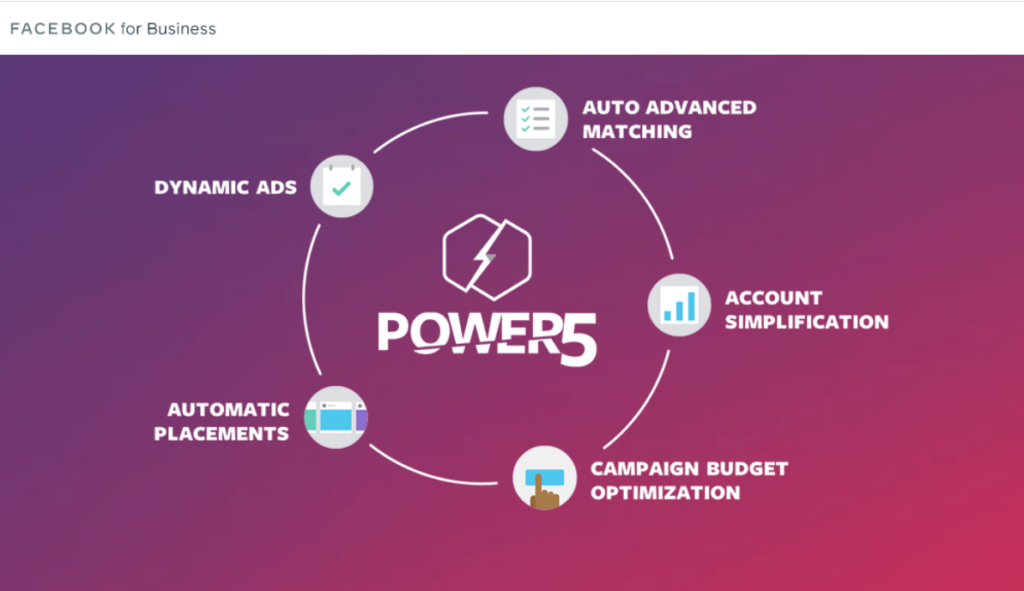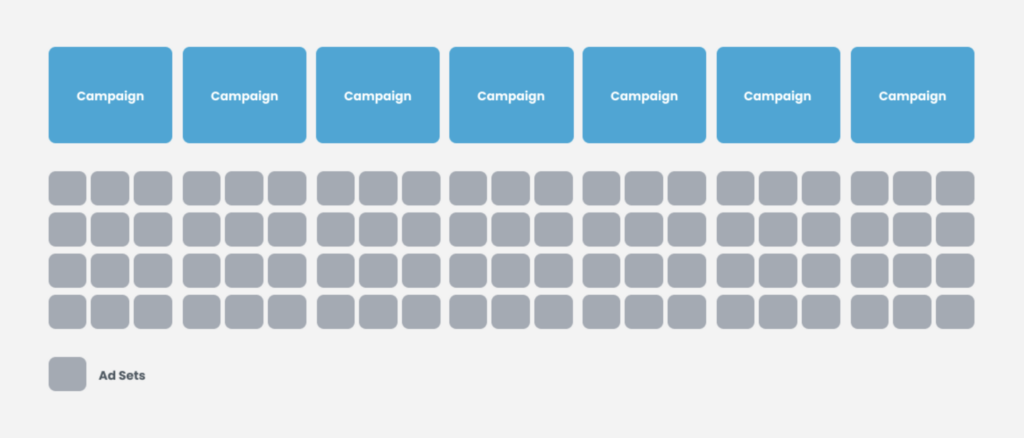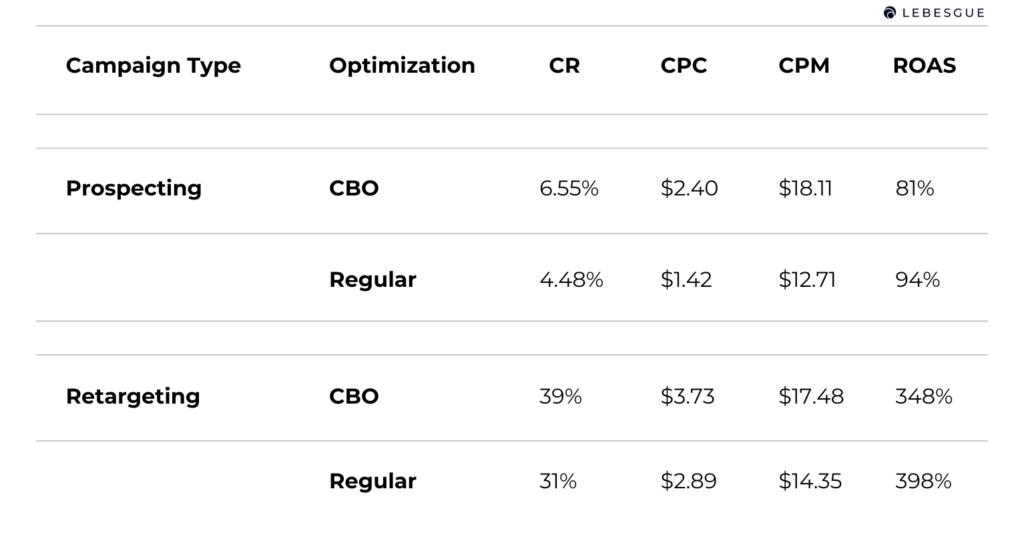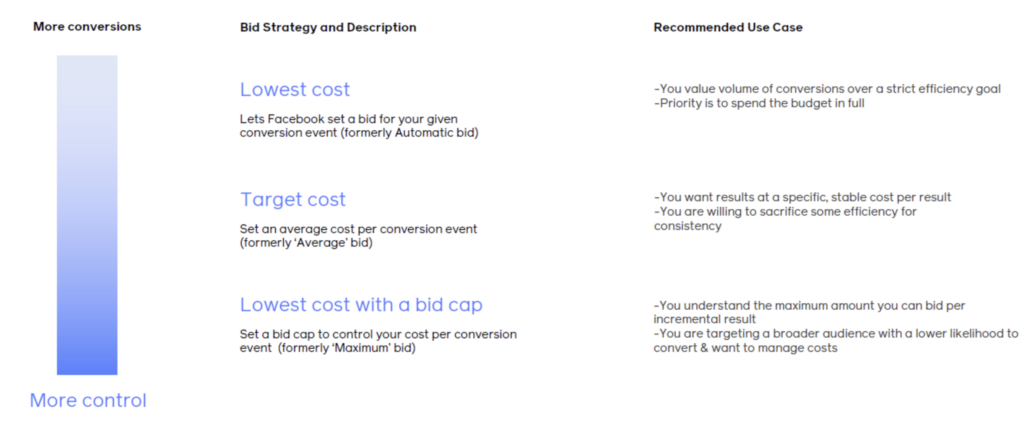Scaling your Facebook advertising begins with the foundation – the right account setup and structure. Many advertisers often overlook this critical step, leading to challenges in data analysis and progress. In this blog post, we’re diving into the essentials and best practices for optimizing your Facebook ad account structure for success and growth, following Facebook’s structure to scale.
Once you put our recommendations to the test, we guarantee you’ll see a difference. Not only is your chance of having better results going to be higher, but it’s also going to be much easier to adjust and optimize your campaigns in the future.
Facebook's Structure to Scale
“Facebook’s structure to scale” means setting up your Facebook advertising in a way that’s efficient for growing your campaigns.
It’s like organizing your advertising toolbox so that you can reach more people effectively. This structure helps businesses expand their advertising efforts on Facebook and get better results.
To do this, you must arrange your Facebook ad account, campaigns, and ads smartly.
This way, you can advertise to a larger audience, control your spending, and keep everything manageable and organized. The exact setup can vary depending on your goal, but it’s all about making your Facebook advertising work better as it grows.
Account Simplification
The first step to creating Facebook’s structure to scale – account simplification. Not so long ago Facebook introduced their “Power 5” tactics to drive better marketing results.

As you can see, one of the 5 power tactics includes simplifying your ad account. You may be asking yourself “What about all the different audiences and creative types? How am I going to test all of them?”
First of all, forget about multiple campaigns with hundreds of different ad sets and ads. There’s no point in hyper-segmenting tons of audiences or creative types.
Not only is your account going to be overloaded with data, but it’s also going to be hard to draw conclusions and know what’s working or not. Let’s make yours and Facebook’s life easier and move from this:

…to this

Opting for a streamlined account structure simplifies the scaling of Facebook ads. By keeping things simple and organized, you gain the flexibility to expand your advertising efforts effortlessly. With this approach, it becomes easier to manage and analyze campaigns, ad sets, and ads, ensuring that you can efficiently scale your Facebook advertising while maintaining control and achieving better results.
Now, let’s see what you should take into consideration when structuring your ad account.
How to Structure Your Ad Account
In the simplified structure, we want to split our campaigns by type. Meaning, prospecting (acquisition) campaigns and remarketing (retargeting) campaigns.
Prospecting campaigns are made out for cold audiences, people who aren’t familiar with your product or business in any way. Meaning, they have not been to your website nor purchased from you in the last 6 months.
Retargeting campaigns feature people who visited your website, initiated checkout, or added something to their cart, but haven’t purchased yet.
These two campaign types are different and therefore require a different approach. This means your ads need to be tailored to the audience you choose and their interaction with your business so far.
Therefore, your remarketing campaigns should offer bottom-of-the-funnel content that features your product’s value propositions and main benefits. On the other hand, for prospecting, you should create top-of-the-funnel content that provides more information about your business and the product you offer.
For the campaign objective, we mostly optimize for conversions as we ultimately want people to convert. The budget split is totally up to you and your preferences. We usually put 70% for prospecting our new customers and 30% for retargeting our existing customers.
Audience targeting
When it comes to targeting, for remarketing you have a couple of options. For example, you can target people who’ve been to your website in the last 30 days, but haven’t purchased in the last 180 days. In this case, just make sure to exclude people who have purchased in the last 180 days. You can really get creative here and choose any website custom audience that is built off of the Facebook pixel.
For prospecting targeting, you could do a 1% Lookalike of your purchasers, and exclude anyone who has been to the website in the last 30 days or purchased in the last 180 days.
Again, there are multiple options here to choose from and we encourage you to test a couple of them to see what works best. If you’re not familiar with Facebook ad targeting options and best practices, check out this guide.
Ad set level
After you’ve created your prospecting campaign, you’re going to work on your ad sets. When setting up your ad sets you’ll need to choose the conversion objective – what pixel event you want optimized for. You can choose from different options, but we always optimize for what we ultimately want, which in most cases are purchases.
As we previously mentioned, we want to have a simplified account structure, so keep in mind to have three to a maximum of five ad sets per campaign. Each ad set could represent a different audience or creative.
So for example, one ad set can feature your lookalike audiences and the other can be interest-based. If you’d like to test a new creative or copy, don’t start by adding new ad sets. You can simply turn off the ad sets that are underperforming and add new ones.
Another strategy that Facebook recommends is to stack multiple audiences or interests into one ad set. The idea is to give Facebook a broad enough audience so that it can find people who will convert at the lowest cost. Again, this could be a good strategy, but not one you should strictly follow. Why?
Let’s say you want to stack all your lookalikes into one ad set. The good news is that you’re not going to enter ad fatigue. Meaning, that because you have a much broader audience, people won’t see the same ad too many times.
The downside though is that you’re not going to be able to analyze which lookalike audience performed best since you stacked them into one ad set. That’s the reason why we prefer to have our audiences and creative broken down by ad set.
Utilize detailed targeting expansion
Whenever you put an interest-based bucket within an ad set there’s a button that says utilize detailed targeting expansion. How does it work? Let’s say you put Apple as an interest and you set it live with the detailed targeting expansion on. If Facebook finds someone who doesn’t fall into this category but is cheaper at a given moment, they’re going to serve your ad to them. How so?
Detailed targeting expansion lets Facebook expand your interests if there’s a chance to reach more people who are likely to convert. So even though this person doesn’t fall in your interest group, maybe he or she was browsing for this Apple product and Facebook recognized a cheaper opportunity for a conversion.
This is a simple option and certainly the one you should always use as it helps to show your ads to additional people.
Automatic placements
Automatic placements (now called Advantage+ Placements) are a great way to ensure that your ads will be served on Facebook’s various networks. Facebook encourages you to use them because it aligns with the principles of Facebook’s structure to scale – it’s not advisable to create unnecessary barriers for the algorithm.
Choosing automatic placements means that the delivery system will allocate your ad set’s budget across multiple placements based on where they’re likely to perform best.
Best practices for CBO
With Campaign Budget Optimization (now called Advantage Campaign Budget), Facebook budget allocation becomes much easier and completely automatic.
What CBO does is that it makes sure to distribute your entire budget across all ad sets, and based on that optimize for the best results.
The downside of using CBO is that you’re no longer able to manually control budgets at the ad set level. Everything is optimized at the campaign level and you basically leave all the heavy lifting to Facebook.
Facebook encourages you to use CBO, so we wanted to A/B test it and see if it’s that effective. We did the test on both our prospecting and retargeting campaigns for 30 days in the same period.
The focus was to see the impact of CBO so all the other variables such as the audience and the creative were the same in every campaign.
Facebook's structure to scale: Budget optimization a/b test
Looking at the table below, we can see that both the prospecting and retargeting campaigns that optimized for CBO brought more expensive traffic. This can be explained by the fact that both the advertising price (CPM) and cost per click (CPC) were higher.
The conversion rate (CR) was also significantly better on the CBO campaigns which tells us two things. When optimizing for CBO, Facebook not only does a good job at bringing us the most expensive traffic, but it also makes sure that this traffic will convert the best.

On the flip side, if your CPM difference is much bigger than the CR one, it’s much more profitable to manually control your budget and bring a cheaper audience. So even though the CBO campaigns generated a higher CR, both the prospecting and retargeting campaigns had the highest ROAS with manual budget distribution.
We would suggest you test it yourself as we’ve also seen cases where CBO did a great job. In the end, it comes to choosing the option that will bring you more traffic which ultimately means there’s a better chance of improving your SEO, retargeting campaigns, and brand awareness.
Facebook bidding strategies
Choosing the right bidding strategy is totally up to you based on your goals and cost requirements. Facebook gives you the following options and recommendations:

Summing Up
There are a ton of ways to structure your Facebook ad account, so feel free to modify our tips based on your past experiences and success stories. The main goal is to follow Facebook’s structure for scaling and get a clear and organized view of your campaigns, ad sets, and ads.
This way it’s going to be much easier to understand which one of your strategies works and how to optimize the performance for the future. If you want to learn more about Facebook advertising, we suggest you check out our blog or join our newsletter.



